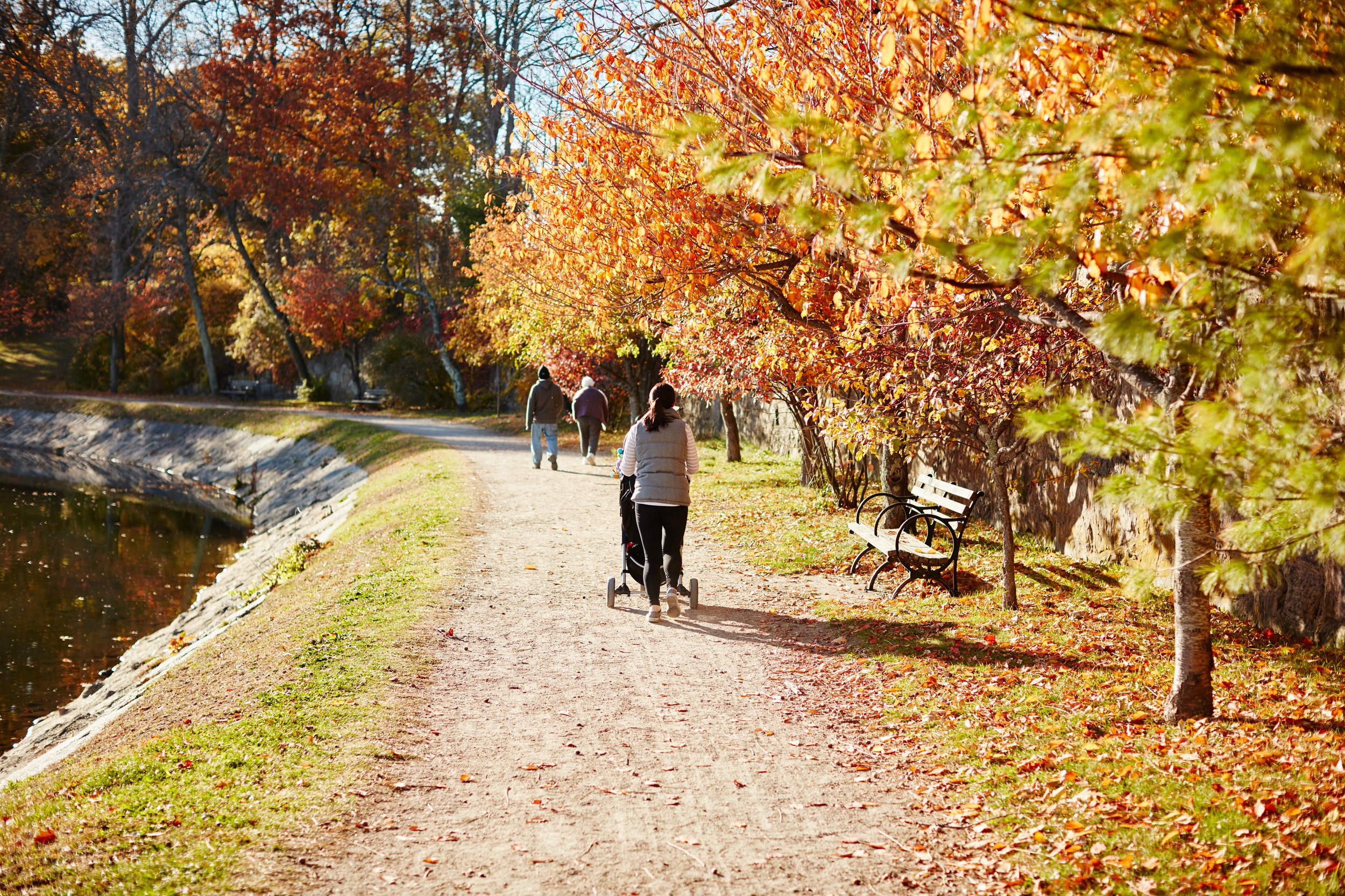
Welcome to Ipswich
Ipswich, Massachusetts was founded in 1634 on land that the Native Americans called “Agawam.” Today Ipswich is celebrated for her Great Marsh clams, Crane Beach, four stone arch bridges over the Ipswich River, and its quaint streets lined with “First Period” houses, more than any other town in the nation.
Key Details
Settled - 1633
Incorporated - 1634
County - Essex
Zip code - 01938
Area
Total - 42.5 sq mi (110.1 km2)
Land - 32.1 sq mi (83.2 km2)
Water - 10.4 sq mi (26.9 km2)
Population (2010)
Total - 13,175
Density - 310/sq mi (120/km2)
Resources
-
Ipswich was founded by John Winthrop the Younger, son of John Winthrop, one of the founders of the Massachusetts Bay Colony in 1630 and its first governor, elected in England in 1629. Several hundred colonists sailed from England in 1630 in a fleet of 11 ships, including Winthrop's flagship, the Arbella. Investigating the region of Salem and Cape Ann, they entertained aboard the Arbella for a day, June 12, 1630, a native chief of the lands to the north, Chief Masconomet. The event was recorded in Winthrop's journal on the 13th, but Winthrop did not say how they overcame the language barrier. The name they heard from Masconomet concerning the country over which he ruled has been reconstructed as Wonnesquamsauke, which the English promptly rendered into the anglicized "Agawam". The colonists, however, sailed to the south where some buildings had already been prepared for them at a place newly named Charlestown.
That winter they lost a few hundred colonists from malnutrition and disease. They also experienced their first nor'easter, which cost them some fingers and toes, as well as houses destroyed by the fires they kept burning day and night. Just as Winthrop was handing out the last handful of grain, the supply ship Lyon entered Boston Harbor. John now sent for his family in England, but his then wife, Margaret, her children, and his eldest son, John, whose mother was the elder John's first wife, Mary Forth, did not arrive until November, on the Lyon.
John the Younger resided with his father and stepmother until 1633, when he resolved to settle in Agawam, with the permission of the General Court of Massachusetts. Captain John Smith had written about the Angoam or Aggawom region in 1614, referring to it as "an excellent habitation, being a good and safe harbour." There is no record of any native resistance to the colonization either at Charlestown or at Agawam, even though estimates of the earlier populations run into the thousands. A plague of 1616–1618 and again in the early 1630s, perhaps smallpox brought from abroad, had apparently devastated the once populous Indian tribes. The fields stood vacant. The colonists encountered but few natives.
John the Younger and 12 men aboard a shallop sailed into Ipswich harbor and took up residence there. Two men continued up the river (now River Road) to a large meadow, which they called New Meadows, now Topsfield. Agawam was incorporated on August 5, 1634, as Ipswich, after Ipswich in the county of Suffolk, England. The name "Ipswich" was taken "in acknowledgment of the great honor and kindness done to our people which took shipping there. Nathaniel Ward, an assistant pastor in town from 1634 to 1636, wrote the first code of laws for Massachusetts and later published the religious/political work, The Simple Cobbler of Aggawam in America in England.
Pioneers would become farmers, fishermen, shipbuilders or traders. The tidal Ipswich River provided water power for mills, and salt marshes supplied hay for livestock. A cottage industry in lace-making developed. But in 1687, Ipswich residents, led by the Reverend John Wise, protested a tax imposed by the governor, Sir Edmund Andros. As Englishmen, they argued, taxation without representation was unacceptable. Citizens were jailed, but then Andros was recalled to England in 1689, and the new British sovereigns, William III and Mary II, issued colonists another charter. The rebellion is the reason the town calls itself the "Birthplace of American Independence".
Great clipper ships of the 19th century, however, bypassed Ipswich in favor of the deep-water seaports at Salem, Newburyport, Quincy, and Boston. The town remained primarily a fishing and farming community, its residents living in older homes they could not afford to replace—leaving Ipswich with a considerable inventory of early architecture. In 1822, a stocking manufacturing machine which had been smuggled out of England arrived at Ipswich, violating a British ban on exporting such technology, and the community developed as a mill town. In 1828, the Ipswich Female Seminary was founded. In 1868, Amos A. Lawrence established the Ipswich Hosiery Mills beside the river. It would expand into the largest stocking mill in the country by the turn of the 20th century. What may be the last witchcraft trial in North America was held in Ipswich in 1878. In the Ipswich witchcraft trial, a member of the Christian Science religion was accused of using his mental powers to harm others, including a spinster living in the town.
The town government was reformed in 1950 with the acceptance of the Town Manager Charter. This charter was rescinded by the voters, regained, lost again, and the present Town Manager-Selectmen Charter was adopted by the voters in 1967. In 2012 Ipswich hired its first female Town Manager, Robin Crosbie, who served until her retirement in 2018.
In 1910, Richard T. Crane, Jr. of Chicago, the business magnate owner of Crane Plumbing, bought Castle Hill, a drumlin on Ipswich Bay. He hired Olmsted Brothers, successors to Frederick Law Olmsted, to landscape his 3,500-acre (14 km2) estate, and engaged the Boston architectural firm of Shepley, Rutan & Coolidge to design an Italian Renaissance-Revival style villa on the summit. A grande allée, 160 feet (49 m) wide and lined with statuary, would run the half mile from house to sea. But his wife, Florence, loathed the building. Crane promised that if she still didn't like it in 10 years, he would replace it. True enough, in 1928 a new 59-room mansion designed by Chicago architect David Adler in the English Stuart style stood in its place, called the Great House. At Mrs. Crane's death in 1949, the entire property was bequeathed to The Trustees of Reservations, which uses it as a venue for concerts and weddings.
-
Appleton Farms (1638)
Brown Stocking Mill Historic District
Castle Hill (1928)
Choate Bridge (1764)
Crane Beach
John Heard House/Ipswich Historical Society (c. 1800)
John Whipple House (1642/1677)
South Green Historic District
-
The first Ipswich Grammar School began around 1636.
Elementary schools
Currently, Paul F. Doyon Elementary and Winthrop Elementary schools are the town's two elementary schools. The schools use the Everyday Math program. Grade levels end in 5th grade, then the students move on to the Ipswich Middle School.
Middle and high schools
The middle school and high school are housed in the same building and share the library, the cafeteria, performing arts facilities and athletic resources (tennis courts, a baseball diamond, a football field, and a running track).
Ipswich High School (IHS) has been considered one of the best public high schools in the Boston area. The Ipswich Public Schools also have what is considered one of the best performing arts programs. In 2005, the high school was named a "Blue Ribbon" school. The Blue Ribbon is an award for national excellence in education under the No Child Left Behind legislation. The school also received a Vanguard award for similar academic prowess. IHS offers college-prep, honors, and AP-level classes. IHS has one of the highest graduation rates in Massachusetts.
Location
Ipswich is located in central Essex County and is 11 miles (18 km) south of Newburyport, 12 miles (19 km) northwest of Gloucester, 13 miles (21 km) north of Salem, 20 miles (32 km) east of Lawrence, and 28 miles (45 km) northeast of Boston. It is bordered by Rowley to the north, Boxford to the west, and Topsfield, Hamilton, Essex and Gloucester to the south. (The border with Gloucester lies across Essex Bay, and as such there is no land connection between the two.)

Check out other communities we service
Boston Neighborhoods
Back Bay, South End, Downtown, Fenway, South Boston, Seaport, East Boston, Allston, Brighton, Jamaica Plain, West Roxbury, Roslindale
North Shore
Swampscott, Marblehead, Salem, Peabody, Lynnfield, Wakefield, Reading, North Reading, Middleton, Danvers, Beverly, Manchester by the Sea, Gloucester, Rockport, Essex, Ipswich, Hamilton, Wenham, Topsfield, Boxford, North Andover, Andover
North of Boston
Cambridge, Somerville, Winchester, Medford, Malden, Melrose, Stoneham, Woburn, Saugus, Arlington, Lexington, Belmont, Burlington, Wilmington
West of Boston (Metrowest)
Brookline, Newton, Weston, Wellesley, Sudbury, Wayland, Lincoln, Waltham, Watertown, Dedham, Needham, Sudbury, Framingham, Natick, Westborough, Southborough, Marlborough, Hudson, Ashland, Dover
*content on this page is a mixture of original and pulled from multiple locations including Wikepedia


